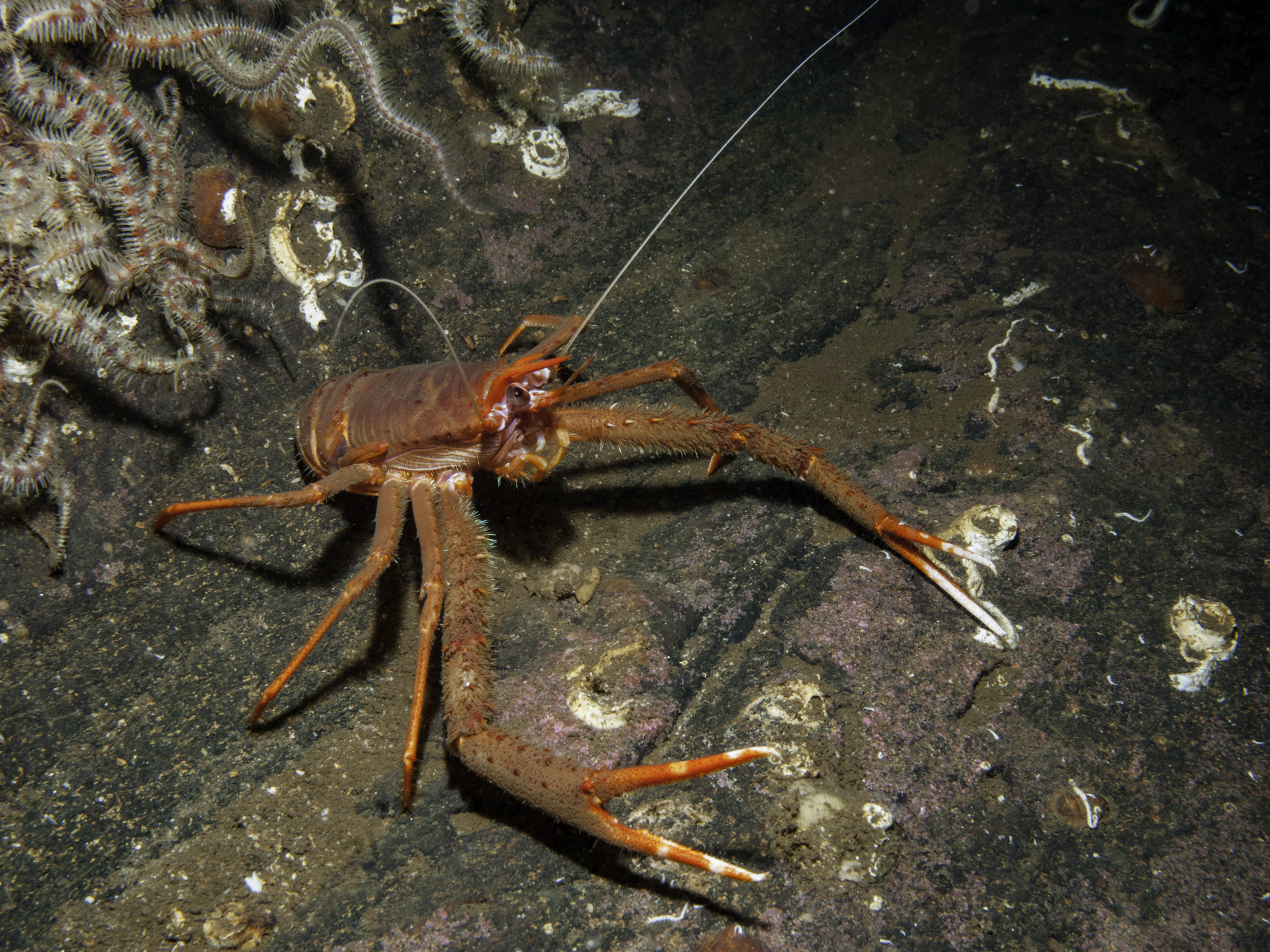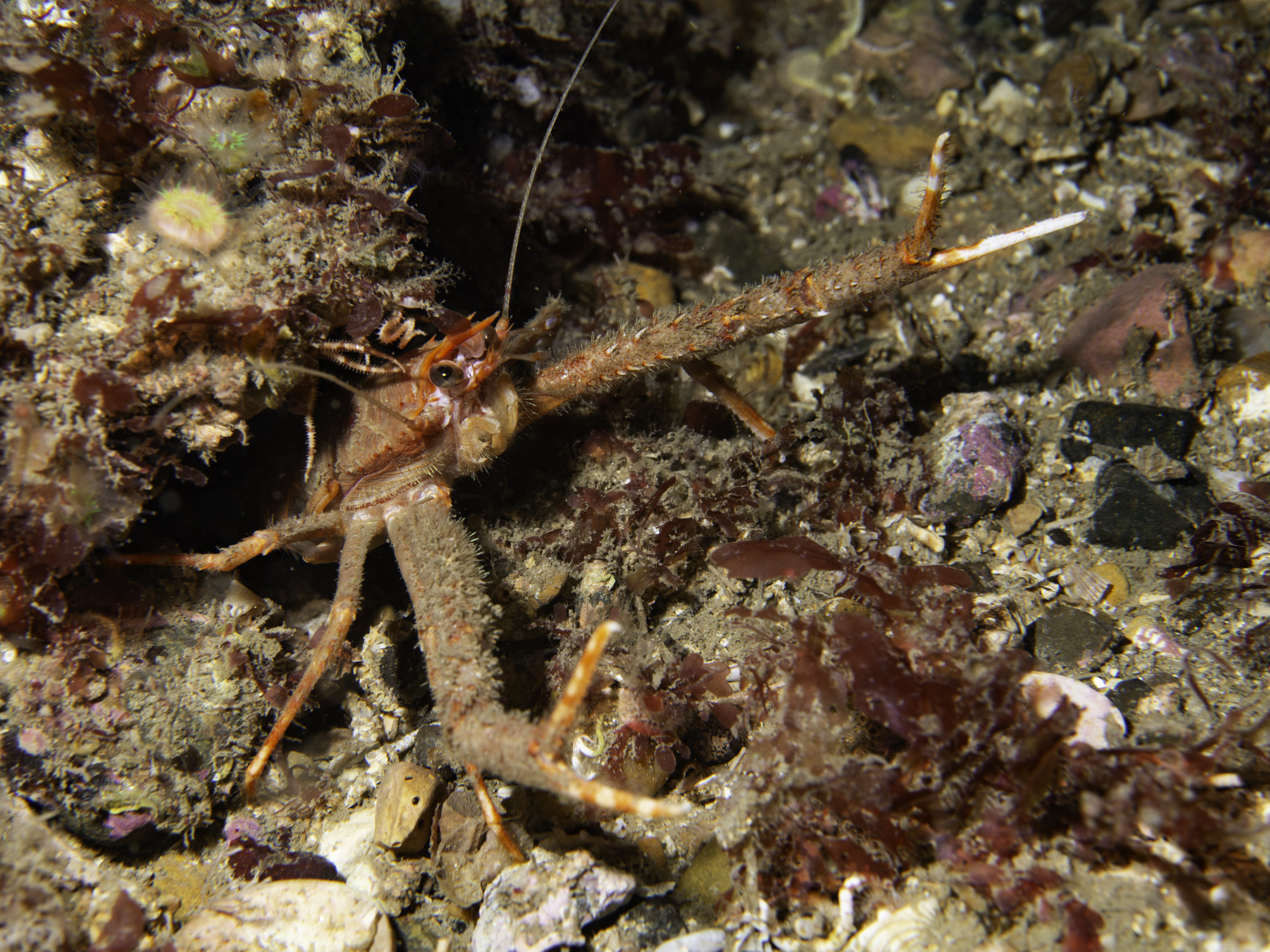| CRUSTACEA : Decapoda : Munididae | CRABS, SHRIMPS AND LOBSTERS |
Munida rugosa (Fabricius, 1775)
 |
| Munida rugosa |
Description: This is the largest squat lobster found in Northern Ireland due to the length of its noticeably long, thin front claws, which are usually at least twice the length of its body. The body can be up to 10 cm (more commonly 6 cm) and is a uniform orange to red-brown colour with darker striations running across the carapace and abdomen. The antennae are very long (almost as long as the claws). The claws have white spines and white tips.
Habitat: Prefers rough ground e.g. cobbles, boulders, crevices in rock. Occasionally also found on muddy sand, gravel, and pebbles. Found from lower shore to 150 m.
Distribution: Found around all coasts of Britain and Ireland. More scarce on south-east coast of England.
Similar Species: Unlikely to be confused with other squat lobster species. The extremely long thin claws are diagnostic.
Key Identification Features:
- Extremely long, thin claws with white spines and white tips.
- Large squat lobster up to 10 cm, can appear larger due to length of claws.
- Uniform red-brown to orange colouration with darker striations.
- Very long antennae.
Distribution Map from NBN: Munida rugosa at National Biodiversity Network mapping facility, data for UK.
iNaturalist: Munida rugosa at iNaturalist World Species Observations database.
GBIF data for Munida rugosa
WoRMS: Munida rugosa at World Register of Marine Species. Accepted name: Munida rugosa (Fabricius, 1775). AphiaID: 107160.
Classification: Biota; Animalia; Arthropoda; Crustacea; Multicrustacea; Malacostraca; Eumalacostraca; Eucarida; Decapoda; Pleocyemata; Anomura; Galatheoidea; Munididae; Munida
| Previous species | Next species |
| Picton, B.E. & Morrow, C.C. (2024). Munida rugosa. (Fabricius, 1775). [In] Encyclopedia of Marine Life of Britain and Ireland. https://www2.habitas.org.uk/marbiop-ni/speciesaccounts.php?item=S24950. Accessed on 2025-04-10 |
